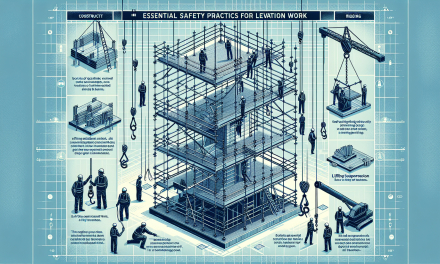Table of Contents
- Introduction
- The Importance of Security Management and Asset Protection
- Key Elements of Effective Security Management
- Understanding Asset Protection
- Strategic Security Planning
- Challenges in Ensuring Security and Asset Protection
- Practical Solutions for Enhancing Security Management
- Equipping Yourself with Knowledge
- Frequently Asked Questions
- Conclusion
Introduction
In today’s unpredictable landscape, the need for robust security management and effective asset protection strategies has never been greater. Regardless of the industry, organizations require comprehensive measures to safeguard their physical, financial, and intellectual assets. In this discussion, we will explore essential concepts and practical approaches to enhance security management and ensure effective asset protection.
The Importance of Security Management and Asset Protection
Security management and asset protection play a critical role in safeguarding organizations against various threats. From data breaches to physical theft, understanding the importance of these strategies helps businesses remain resilient. Moreover, effective management practices not only protect assets but also contribute to maintaining a positive reputation and fostering stakeholder trust. After all, a secure organization instills confidence in employees, customers, and partners alike.
Why Prioritize Security?
Prioritizing security measures is essential for several reasons:
- Prevention of Loss: Effective security practices prevent financial losses associated with theft, fraud, and data breaches.
- Regulatory Compliance: Many industries face strict regulatory requirements that necessitate robust security measures.
- Business Continuity: Security management contributes to business continuity, ensuring that operations can continue uninterrupted.
- Reputation Management: Protecting assets bolsters trust and company reputation, crucial factors for long-term success.
Key Elements of Effective Security Management
To achieve a comprehensive security management strategy, several key elements must be considered:
Risk Assessment
Risk assessment involves identifying potential risks and vulnerabilities that could impact an organization. This process typically includes evaluating various aspects such as:
- Physical security measures
- Cybersecurity protocols
- Employee training and awareness
- Emergency response plans
By systematically assessing these areas, organizations can formulate targeted strategies to address specific vulnerabilities.
Security Policies and Procedures
Establishing clear security policies and procedures is a vital step in effective security management. These guidelines should be communicated to all employees, ensuring that everyone understands their roles and responsibilities in maintaining security.
Components of Security Policies
Effective security policies typically include:
- Acceptable use policies for technology
- Incident response protocols
- Data protection measures
- Visitor access controls
Training and Awareness
Continuous training and awareness programs equip employees with the knowledge needed to recognize potential security threats. Regular training helps foster a culture of vigilance, encouraging individuals to proactively report suspicious activities.
Understanding Asset Protection
Asset protection encompasses a wide range of strategies aimed at securing an organization’s physical and intellectual property. Effective asset protection strategies contribute to minimizing the risk of loss and ensuring business resilience. Therefore, a comprehensive understanding of what assets need protection and the methods available for this purpose is essential.
Categories of Assets
Organizations should recognize the various categories of assets that require protection:
- Physical Assets: Buildings, equipment, and inventory.
- Intellectual Property: Patents, trademarks, copyrights, and confidential information.
- Financial Assets: Cash, investments, and accounts receivable.
Effective Asset Protection Strategies
Among the most effective asset protection strategies are:
- Insurance Coverage: Adequate insurance can help mitigate the impact of losses.
- Physical Security Systems: Implementing strong access control and surveillance systems.
- Legal Protections: Utilizing legal structures to protect intellectual property and minimize liability.
Strategic Security Planning
Strategic security planning is critical for organizations to remain proactive rather than reactive. This element involves developing long-term plans and objectives to address potential risks and vulnerabilities. The planning process should include assessments of current security measures and identification of areas needing improvement.
Creating a Security Plan
To create an effective security plan, organizations should consider the following steps:
- Identify Security Goals: Define what the organization seeks to achieve regarding security.
- Conduct Risk Analysis: Assess potential risks and determine the likelihood of their occurrence.
- Develop and Implement Policies: Create actionable policies based on identified risks and goals.
- Review and Update Regularly: Continually evaluate the effectiveness of the security plan and make adjustments as needed.
Challenges in Ensuring Security and Asset Protection
Despite best efforts, organizations often face significant challenges in ensuring security and asset protection. Understanding these challenges is essential for developing effective mitigation strategies.
Emerging Threats
The landscape of security threats is constantly evolving. New technologies, such as the Internet of Things (IoT), introduce additional vulnerabilities. Organizations must stay ahead of potential threats through ongoing education and adaptation.
Limited Resources
Many organizations, especially smaller ones, struggle with limited resources for security management. Finding cost-effective solutions while maintaining a high level of security can be challenging. However, leveraging technology and community partnerships can enhance security without requiring substantial budgets.
Practical Solutions for Enhancing Security Management
Enhancing security management and asset protection involves the implementation of various practical solutions. Some effective approaches include:
Adopting Technology
Investing in technology can significantly bolster security measures. From advanced surveillance systems to cybersecurity software, technology offers innovative solutions to stay ahead of threats. Moreover, leveraging cloud-based security options can provide scalability and flexibility.
Engaging Employees
Employee engagement fosters a security-conscious workplace culture. Providing incentives for reporting potential issues or participating in training can strengthen security awareness. Furthermore, creating a forum for employees to discuss security concerns can yield valuable insights.
Continuous Improvement
Security management should never be static. Organizations must adopt a mindset of continuous improvement, regularly reviewing policies and procedures to adapt to new challenges and maintain compliance with evolving regulations.
Equipping Yourself with Knowledge
For those looking to deepen their understanding and capabilities in security management, consider exploring resources like the Master Asset Protection & Security Management Course. This program offers a wealth of information on best practices, methodologies, and advanced strategies crucial for effective security management.
Frequently Asked Questions
What is the main goal of security management?
The primary goal of security management is to safeguard an organization’s assets against threats while ensuring compliance with relevant laws and regulations. This encompasses physical safety, data protection, and the overall well-being of employees and stakeholders.
How can organizations effectively assess security risks?
Organizations can effectively assess security risks by conducting thorough risk assessments that identify vulnerabilities. These assessments should analyze both internal and external threats alongside potential impacts on the organization’s assets.
Conclusion
In conclusion, effective security management and asset protection are paramount for organizations aiming to thrive in today’s complex environment. By understanding the importance of security strategies, addressing challenges, and implementing proactive measures, businesses can protect their most valuable assets. Ultimately, a robust security management framework not only mitigates risks but also positions organizations for sustainable growth and success.
For those keen on honing their skills in this area, resources like Essential Guidelines for Effective Safety Management Strategies, Mastering Advanced Process Risk Assessment and Management Strategies, A Comprehensive Guide to Effectively Managing Health and Safety in the Workplace, and Mastering Modern Security Management and Operations for Today’s Challenges provide valuable insights and guidance. Embrace continuous learning and stay secure!





